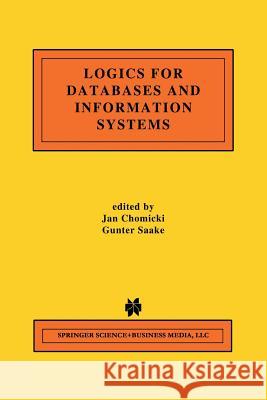Logics for Databases and Information Systems » książka
Logics for Databases and Information Systems
ISBN-13: 9781461375821 / Angielski / Miękka / 2012 / 430 str.
Time is ubiquitous in information systems. Almost every enterprise faces the problem of its data becoming out of date. However, such data is often valu- able, so it should be archived and some means to access it should be provided. Also, some data may be inherently historical, e.g., medical, cadastral, or ju- dicial records. Temporal databases provide a uniform and systematic way of dealing with historical data. Many languages have been proposed for tem- poral databases, among others temporal logic. Temporal logic combines ab- stract, formal semantics with the amenability to efficient implementation. This chapter shows how temporal logic can be used in temporal database applica- tions. Rather than presenting new results, we report on recent developments and survey the field in a systematic way using a unified formal framework GHR94; Ch094]. The handbook GHR94] is a comprehensive reference on mathematical foundations of temporal logic. In this chapter we study how temporal logic is used as a query and integrity constraint language. Consequently, model-theoretic notions, particularly for- mula satisfaction, are of primary interest. Axiomatic systems and proof meth- ods for temporal logic GHR94] have found so far relatively few applications in the context of information systems. Moreover, one needs to bear in mind that for the standard linearly-ordered time domains temporal logic is not re- cursively axiomatizable GHR94]' so recursive axiomatizations are by necessity incomplete.











